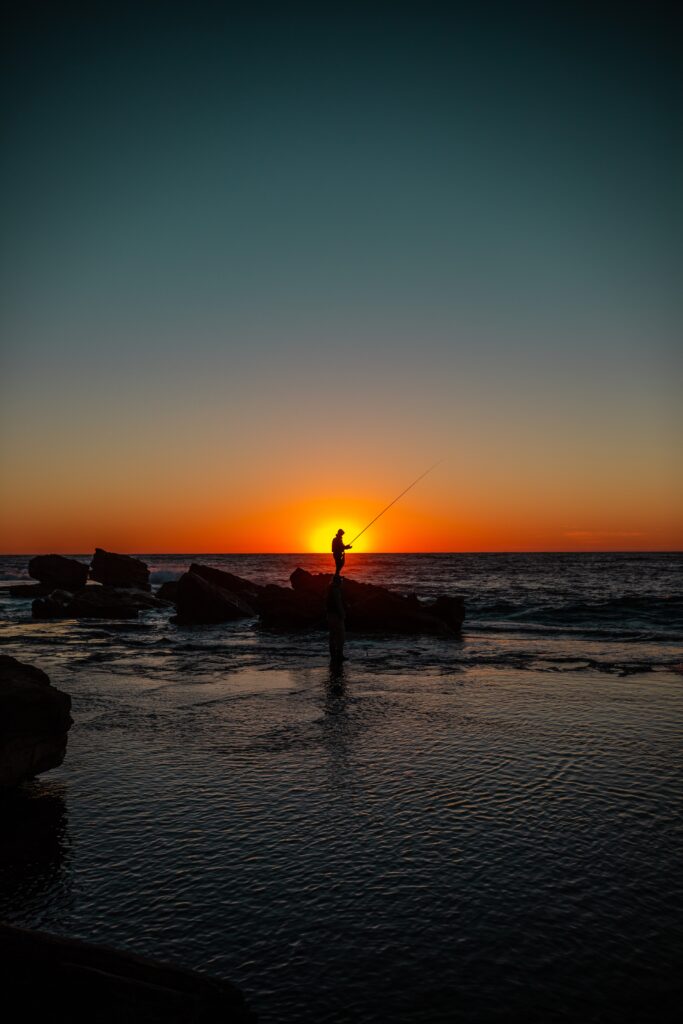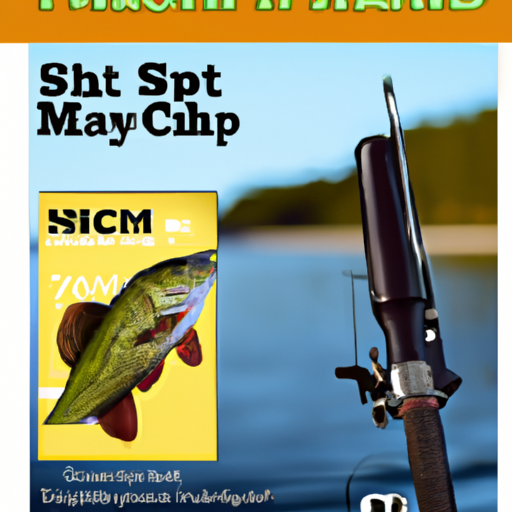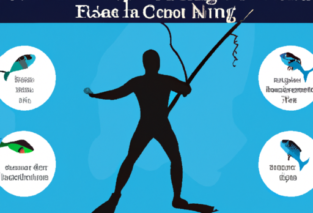Are you eager to learn the art of match fishing but not sure where to start? Look no further, because “Introduction To Match Fishing For Beginners” is here to pave the way for you! This comprehensive guide is designed to equip aspiring anglers with the essential knowledge and techniques needed to excel in match fishing. From understanding different fishing techniques to selecting the right gear and baits, this product is your ticket to embarking on an exhilarating journey into the world of match fishing. Get ready to cast your line and reel in success like never before!

What is Match Fishing?
Definition of match fishing
Match fishing is a popular angling technique that involves fishing in a competitive environment. Anglers, or participants, compete against each other to catch the most fish or achieve a specified target within a given time frame. The objective is to outwit the fish and accumulate the highest weight or number of fish in a particular spot or venue. Match fishing is an exciting combination of skill, strategy, and patience, and it offers a unique opportunity to showcase one’s angling abilities in a controlled and competitive setting.
History of match fishing
Match fishing has a rich history that dates back several centuries. It originated in the United Kingdom and gained popularity as a way for anglers to showcase their fishing skills and compete against each other. The sport has evolved over time, with the introduction of various rules, techniques, and equipment. Today, match fishing is practiced worldwide and has become a popular recreational activity, as well as a competitive sport. It brings together anglers of all skill levels, from beginners to seasoned professionals, who share a common passion for fishing and enjoy the thrill of competition.
Basic Gear and Equipment for Match Fishing
Fishing Rods
A fishing rod is the primary tool in match fishing, and it plays a crucial role in casting, hooking, and landing fish. When selecting a fishing rod for match fishing, it is important to consider the length, action, and material of the rod. Longer rods, typically between 11 to 14 feet, are preferred for match fishing as they allow for greater casting distance and better control over the fishing line. Additionally, rods with a fast or medium-fast action are ideal for match fishing, as they offer a good balance of sensitivity and strength.
Fishing Reels
Fishing reels are used to spool and control the fishing line, as well as to retrieve the line when reeling in a fish. Match fishing often requires reels with a high line capacity and a smooth drag system to handle large and hard-fighting fish. The two main types of reels used in match fishing are fixed spool reels and baitcasting reels. Fixed spool reels are the most common choice due to their ease of use and versatility.
Fishing Line
Choosing the right fishing line is essential for match fishing. Monofilament lines are commonly used for their versatility and affordability. The line’s breaking strength should be suitable for the target fish species and the fishing conditions. Thicker lines are generally used for larger fish, while lighter lines offer better sensitivity and finesse for smaller species. It is important to regularly inspect and replace the fishing line to avoid any breakages or weakened lines that could result in lost fish.
Hooks
Hooks are an integral part of match fishing gear, as they are responsible for hooking and securing the fish. Match anglers typically use a variety of hook sizes and styles to match the target fish species and bait being used. Barbless hooks are often favored in match fishing, as they reduce the risk of injuring the fish and make the unhooking process easier. It is essential to regularly sharpen and check the condition of hooks to ensure optimal performance.
Floats
Floats, also known as bobbers or quivertips, are used in match fishing to detect bites and indicate when a fish is taking the bait. There are various types of floats available, such as wagglers, stick floats, and pole floats, each designed for specific fishing techniques and conditions. The choice of float depends on factors such as water depth, current, and the desired presentation of the bait. It is crucial to select the right float and properly set it up to ensure accurate bite detection and control.
Baits and Groundbaits
Baits and groundbaits are essential in match fishing, as they attract fish to the angler’s fishing spot and entice them to bite. There is a wide range of baits available, including live bait, artificial bait, and groundbait mixes. The choice of bait depends on the target fish species and the fishing conditions. Groundbaits, which are mixtures of various ingredients such as breadcrumbs, pellets, and additives, are used to create an attractive feeding area for the fish. It is essential to experiment with different baits and groundbaits to determine what works best in each fishing situation.
Landing Nets
Landing nets are used to safely land and handle fish once they are hooked and brought close to the angler. A landing net should have a strong and durable frame, as well as a soft and fish-friendly net material. The net’s size and depth are crucial in accommodating the size and weight of the fish being targeted. It is important to handle fish with care when using a landing net to minimize stress and injury to the fish before releasing it back into the water.
Fishing Tackle Boxes
Fishing tackle boxes are used to organize and carry all the necessary gear and accessories for match fishing. They come in various sizes and designs, ranging from simple boxes with compartments to advanced systems with multiple trays and storage options. Tackle boxes are essential for keeping hooks, floats, weights, and other small items neatly organized and easily accessible during a fishing session. It is important to regularly check and restock the tackle box to ensure that all the required gear is readily available.
Extra Accessories
In addition to the basic gear and equipment, match anglers often use various accessories to enhance their fishing experience and increase their chances of success. These accessories can include items such as rod rests, bite alarms, rod pods, bank sticks, umbrellas, and fishing chairs. These accessories provide comfort, convenience, and additional stability while fishing, especially during long sessions. It is important to consider the specific fishing conditions and individual preferences when selecting and using these accessories.

Selecting the Right Fishing Spot
Choosing the Right Venue
Selecting the right fishing spot is crucial for a successful match fishing session. It is essential to choose a venue that is suitable for the desired target fish species and offers the necessary facilities and access. Match fishing venues can include lakes, rivers, canals, and commercial fisheries. Researching online, consulting local angling clubs or experienced anglers, and visiting potential venues beforehand can provide valuable insights into the best options available. Consider factors such as the venue’s reputation, previous match results, and the presence of fish species that align with your angling goals.
Understanding the Water
Understanding the water conditions is vital in match fishing, as it can significantly impact fish behavior and feeding patterns. Be observant of factors such as water temperature, clarity, depth, current, and vegetation. Warm water temperatures can encourage fish to feed actively, while cold temperatures may slow down their metabolism. Clear water conditions require a more subtle and finesse approach, while murky water may require more aggressive tactics to attract fish. Deep water may hold different fish species than shallow water, and the presence of underwater structures or vegetation can impact fish location and feeding habits.
Identifying Fish Habits
Observing and understanding fish habits is a key factor in successful match fishing. Research the target fish species and learn about their feeding preferences, migration patterns, and behavior in different weather conditions. Some fish prefer feeding on the bottom, while others may feed near the surface or in mid-water. Understanding the fish’s preferred feeding times, such as early morning or late evening, can also inform the angler’s strategy. Pay attention to any visible signs of fish activity, such as jumping, feeding swirls, or bubbling. These observations can provide valuable clues on where to focus your efforts.
Key Factors to Consider
When selecting a fishing spot for match fishing, there are several key factors to consider:
-
Access: Ensure that the venue provides easy access to fishing spots, parking facilities, and amenities such as toilets and refreshments.
-
Peg Choice: Match fishing venues are often divided into “pegs,” designated fishing areas. Choose a peg that provides a good vantage point, adequate space, and suitable water conditions for your preferred fishing technique.
-
Wind and Weather: Take into account the direction and intensity of the wind, as it can affect casting distance, presentation, and fish behavior. Consider how the wind may impact fishing from your chosen peg, and adjust your approach accordingly.
-
Local Knowledge: Talk to local anglers or venue staff to gain insights into the venue’s specific quirks and favored fishing spots. Their knowledge and experience can be invaluable in identifying productive fishing areas.
-
Pre-Baiting: Pre-baiting involves introducing bait into the fishing spot days or hours before the match. It can help attract fish to your chosen area and increase your chances of success. Consider pre-baiting as a strategy, but be aware of any rules or regulations regarding baiting at the chosen venue.
By carefully considering these factors, matching fishing beginners can increase their chances of success and maximize their fishing experience.
Techniques and Methods for Match Fishing
Float Fishing
Float fishing is one of the most popular techniques used in match fishing. It involves using a float, attached to the fishing line, to indicate when a fish is biting. The float is cast out and allowed to drift or held stationary at a predetermined depth. The angler watches the float for any movement or unusual behavior that may indicate a fish is taking the bait. Float fishing is versatile and can be used with various baits and fishing styles, such as pole fishing, waggler fishing, and feeder fishing.
Pole Fishing
Pole fishing is a technique that utilizes a long fishing pole to present bait at close range. The pole, often made of lightweight carbon fiber, allows for precise bait presentation and accurate control over the fishing line. Pole fishing is suitable for fishing in narrow or confined areas, such as canals or commercial fisheries with overhanging trees or vegetation. The angler can position the pole at different lengths and depths to entice fish and achieve the desired presentation.
Feeder Fishing
Feeder fishing involves using a feeder, a device filled with bait, to attract fish to the angler’s fishing spot. The feeder is attached to the fishing line and cast out to the desired location. As the feeder lands on the water and settles, it releases bait particles, which create an attractive feeding area for the fish. Feeder fishing is commonly used in still waters, such as lakes or reservoirs, and is effective for catching a variety of fish species.
Leger Fishing
Leger fishing, also known as ledgering or bottom fishing, involves presenting the bait on or near the bottom of the water. The angler uses a weight, known as a leger, to anchor the fishing line and keep the bait in the desired position. Leger fishing is effective for targeting bottom-feeding fish species, such as carp or bream. It requires a sensitive rod and line setup to detect subtle bites or movements from the fish.
Waggler Fishing
Waggler fishing is a technique that utilizes a float, known as a waggler, to present bait at various depths. The waggler is attached to the fishing line and cast out. It is designed to suspend the bait at a predetermined depth, allowing the angler to present the bait at different levels in the water column. Waggler fishing is versatile and can be used in still waters, slow-moving rivers, or canals. It offers excellent visibility and bite detection, making it a popular choice in match fishing.
By familiarizing themselves with these techniques and methods, match fishing beginners can vary their approach and adapt to different fishing conditions, increasing their chances of success on the water.

Fishing Etiquette and Rules
Code of Conduct
Observing proper fishing etiquette is essential in match fishing to ensure a fair, enjoyable, and respectful environment for all participants. Some common principles of fishing etiquette include:
-
Respect Other Anglers: Give fellow anglers plenty of space and avoid casting over their fishing lines to prevent tangling or disrupting their fishing experience.
-
Be Quiet and Considerate: Keep noise levels to a minimum, especially when fishing in close proximity to other anglers. Be mindful of others’ concentration and avoid unnecessary disturbances.
-
Dispose of Waste Responsibly: Pack out all your trash and dispose of it properly. Keep the fishing area clean and respect the environment.
-
Follow Venue Rules: Familiarize yourself with any specific rules or regulations set by the venue or competition organizers. These rules may include fishing methods, bait restrictions, and match timings.
-
Be Patient and Respectful: Match fishing requires patience, and it is important to remain calm and respectful, even in challenging fishing conditions or when facing disappointments. Congratulate fellow anglers on their successes and learn from experienced anglers to improve your skills.
Respect for the Environment
Match fishing enthusiasts should prioritize the conservation of the environment and the welfare of the fish. Some key practices to promote environmental awareness include:
-
Catch and Release: Consider catch and release practices, especially for fish species that are not intended for consumption. Handle fish with care to minimize stress and injury, and ensure their safe return to the water.
-
Avoid Polluting: Dispose of any angling-related waste responsibly, such as broken fishing lines, packaging materials, or bait containers. Avoid using excessive groundbait that may impact water quality or disturb natural habitats.
-
Respect Protected Areas: Respect any designated protected areas or restrictions that may be in place to preserve sensitive habitats or rare species. Familiarize yourself with local conservation efforts and support initiatives that protect the natural environment.
By following these guidelines, match fishing enthusiasts can contribute to the preservation of the environment and ensure the sustainability of the sport for future generations.
Understanding Match Fishing Competitions
Formats of Match Fishing Competitions
Match fishing competitions can take different formats, depending on the specific rules and objectives set by the organizers. Some common competition formats include:
-
Individual Matches: Participants compete individually, aiming to catch the highest weight or the most fish within a specified time frame. The angler with the highest score at the end of the match wins.
-
Team Matches: Participants form teams and compete against other teams in a similar fashion as individual matches. The scores of all team members are combined to determine the winning team.
-
Knockout Matches: Participants compete in a series of matches, with the lowest-ranked anglers being eliminated after each round. The competition progresses until only a few anglers remain, and they compete for the top positions.
-
Pairs Matches: Participants form pairs and compete against other pairs. The scores of both anglers in each pair are combined to determine the winning pair.
Scoring Systems
Scoring systems in match fishing competitions can vary, but they often involve counting the total weight or number of fish caught by each angler or team. The scores may be recorded during the match or evaluated at the end based on the fish kept in the landing net or provided by the angler as evidence. The exact scoring system should be clarified before the competition begins to ensure a fair evaluation and transparent results.
Common Rules and Regulations
Match fishing competitions typically have specific rules and regulations that participants must adhere to. These rules may include:
-
Fishing Methods: Matches may specify the permitted fishing methods, such as pole fishing, feeder fishing, or float fishing. Anglers must comply with these rules and use only the approved techniques.
-
Bait Restrictions: Some matches may impose restrictions on the types of bait that can be used. This ensures a level playing field and prevents the use of unfair or prohibited bait.
-
Match Timings: Matches have a predetermined duration, which could vary from a few hours to a full day. Participants must start and finish fishing within the designated time frame.
-
Peg Allocation: The organizers may assign pegs or fishing spots to participants either randomly or through a draw process. Participants must respect these allocations and fish only from their designated pegs.
-
Disqualification: Certain actions or behaviors may result in disqualification from the match, such as using unauthorized equipment, tampering with other participants’ gear, or violating venue or competition-specific rules.
It is important for participants to familiarize themselves with the rules and regulations of each match fishing competition they enter. This ensures fair play, a positive experience, and a level playing field for all participants.

Tips and Tricks for Match Fishing Beginners
Learn from Experienced Anglers
An excellent way to accelerate your match fishing skills and knowledge is by learning from experienced anglers. Seek out opportunities to fish alongside experienced match fishermen, join local angling clubs, or participate in coaching sessions or workshops. Experienced anglers can offer valuable insights and guidance on tackle selection, fishing tactics, and specific techniques that work well in your local fishing spots. Observing their methods and asking for advice can shorten your learning curve and help you improve your angling abilities.
Practice Regularly
Like any skill, match fishing requires practice to become proficient. Regular practice sessions allow you to hone your casting, bait presentation, and fish-fighting techniques. Set aside dedicated time each week to go fishing, even if it’s just for a few hours. By consistently practicing, you’ll become more familiar with different fishing techniques, gain a better understanding of fish behavior, and improve your overall angling skills.
Pay Attention to Details
Success in match fishing often depends on paying attention to small details. Be observant of fish movements, water conditions, and changes in weather patterns. These subtle cues can provide valuable information about where fish may be located and how they are responding to your bait and presentation. Observe the behavior of experienced anglers nearby and learn from their subtle adjustments and approaches. Taking note of these details and making adjustments accordingly can greatly increase your chances of success.
Experiment with Different Techniques
Match fishing offers a wide range of techniques and methods to catch fish. Don’t be afraid to experiment with different tactics and approaches during your practice sessions. Try various fishing styles, bait combinations, and fishing spots to see what works best for you and the fish you are targeting. Embrace the learning process and be open to trying new things. Remember, even if a technique or method doesn’t yield immediate results, it can still provide valuable learning experiences and insights for future matches.
Patience and Perseverance
Match fishing requires patience and perseverance. Not every fishing session will result in a string of successful catches, and it’s important to remain positive and resilient. Be prepared to face challenging conditions, fish that are uninterested in your bait, or instances when other anglers seem to be outperforming you. Instead of becoming discouraged, see these situations as opportunities to learn and improve. With time and experience, you will develop the patience and perseverance necessary to succeed in match fishing.
By following these tips and tricks, match fishing beginners can develop their angling skills, increase their knowledge, and enjoy a rewarding and fulfilling journey in the world of match fishing.
Common Mistakes to Avoid
Using Inappropriate Gear
Using gear that is not suitable for match fishing can significantly impact your performance and enjoyment of the sport. It is important to invest in quality fishing gear that matches the target fish species and fishing conditions. Using fishing rods that are too short or too stiff, reels with inadequate line capacity, or hooks that are too large or too small can result in lost fish, tangles, or uncomfortable fishing experiences. Research and seek advice from experienced anglers or tackle shops to ensure you have the right gear for match fishing.
Ignoring Weather Conditions
Weather conditions play a crucial role in match fishing. Ignoring or underestimating the impact of weather can hinder your success on the water. Windy conditions, for example, can make casting difficult or disrupt the behavior and feeding patterns of fish. Rainfall can affect water clarity and prompt fish to change their feeding locations. Extreme heat or cold temperatures may require adjustments in bait presentation and fishing depths. By monitoring and adapting to the weather conditions, you can make informed decisions and optimize your fishing performance.
Overfeeding Fish
Match fishing involves attracting fish to your fishing spot by introducing bait into the water. While it’s important to create an attractive feeding area, overfeeding fish can have negative consequences. Excessive feeding can result in fish becoming lethargic or disinterested in your bait offering, as they are already satiated. It is essential to strike a balance between providing enough food to attract fish and avoiding oversaturation. Experimentation and observation are key to finding the optimal feeding rate and attracting fish to your fishing spot.
Lack of Preparation
Arriving at a match fishing session without proper preparation can diminish your chances of success. Failing to check and maintain your gear, replenish your tackle box, or prepare suitable baits and groundbaits can lead to unnecessary challenges and missed opportunities. Before each fishing session, ensure that all your gear is in good working order, your fishing line is spooled correctly, and your tackle box is adequately stocked. Also, consider researching the fishing spot’s characteristics, such as features and fish behavior, to better plan your approach and make the most of your fishing time.
By avoiding these common mistakes, match fishing beginners can navigate the learning curve more effectively and increase their enjoyment and success in the sport.

Safety Measures in Match Fishing
General Safety Guidelines
Practicing proper safety measures is essential to ensure the well-being of match fishing participants. Some general safety guidelines to follow include:
-
Wear a Life Jacket: When fishing on or near water bodies, wearing a properly fitted life jacket is crucial for personal safety, especially if you are fishing from a boat or in areas with strong currents.
-
Be Aware of Your Surroundings: Always be mindful of your surroundings, especially when fishing alongside other anglers or in high-traffic fishing areas. Avoid casting lines into areas where people may be swimming, boating, or participating in other activities.
-
Keep Fishing Gear Organized: Keep your fishing tackle organized and safely stored to prevent accidents or injuries, especially when moving between fishing spots or in crowded areas.
-
Use Sun Protection: Protect yourself from the harmful effects of the sun by wearing sunscreen, a wide-brimmed hat, sunglasses, and appropriate clothing. Hydrate regularly and seek shade when necessary.
-
Be Cautious on Slippery Surfaces: Fishing spots can be slippery, especially in wet or icy conditions. Use caution when walking on rocks, piers, or other surfaces, and wear appropriate footwear with good traction.
First Aid and Emergency Procedures
In case of any injuries or emergencies during a match fishing session, it is important to have basic first aid knowledge and emergency procedures in place. Carry a well-stocked first aid kit with essentials such as bandages, antiseptic wipes, pain relievers, and any necessary personal medications. Familiarize yourself with basic first aid techniques, such as treating cuts or bruises, and be prepared to seek immediate medical assistance if necessary. It is also beneficial to have emergency contact information readily available, including local emergency services and any on-site venue personnel.
By prioritizing safety and being prepared for potential risks or emergencies, match fishing participants can enjoy their angling experience with peace of mind.
Conservation and Environmental Awareness
Catch and Release Practices
Match fishing enthusiasts have a responsibility to practice catch and release techniques to promote fish conservation and ensure the sustainability of fish populations. Some important practices to follow include:
-
Proper Handling: Handle caught fish with care, ensuring minimal stress and avoiding any unnecessary harm. Wet your hands before touching the fish to protect their delicate skin and scales.
-
Quick Release: Minimize the time the fish spends out of the water to avoid suffocation. Remove the hook or unclip the fishing tackle and return the fish to the water as quickly as possible.
-
Efficient Unhooking: Use specialized fishing tools, such as forceps or disgorgers, to safely and efficiently unhook the fish. Avoid excessive handling or damage to the fish’s mouth or gills.
-
Supportive Landing Nets: Use landing nets with soft mesh material to prevent injuries and stress to the fish. Ensure that the netting is wet prior to landing the fish and consider using knotless mesh to prevent damage to the fish’s protective slime layer.
By practicing responsible catch and release techniques, match fishing enthusiasts can contribute to the conservation and preservation of fish populations for future generations.
Responsible Waste Disposal
Responsible waste disposal is crucial in maintaining clean and healthy fishing environments. Match fishing participants should prioritize proper waste management and take the following steps:
-
Carry a Waste Bag: Bring a dedicated bag to collect any angling-related waste, such as bait packaging, broken fishing lines, or other debris. Avoid littering or leaving any trash behind.
-
Recycle When Possible: Separate recyclable materials from general waste and dispose of them in designated recycling facilities. Recycling helps reduce waste and conserve natural resources.
-
Participate in Clean-Up Initiatives: Get involved in local clean-up initiatives aimed at preserving the natural environment and waterways. Join or support organizations working to keep fishing spots and surrounding areas clean and free of waste.
By adopting responsible waste disposal practices, match fishing participants contribute to the preservation of the environment and the well-being of fish and wildlife populations.
In conclusion, match fishing is an exciting and competitive angling sport that combines skill, strategy, and patience. By understanding the basic gear and equipment, selecting the right fishing spot, learning different techniques, and following fishing etiquette and rules, beginners can embark on a fulfilling journey in match fishing. By practicing regularly, paying attention to details, and avoiding common mistakes, they can improve their angling abilities and enjoy successful experiences on the water. Safety measures, conservation awareness, and responsible waste disposal play vital roles in ensuring a sustainable and enjoyable match fishing environment for everyone involved. So grab your fishing gear, explore the waters, and immerse yourself in the world of match fishing!





